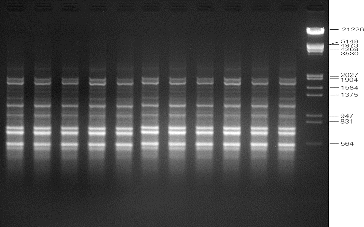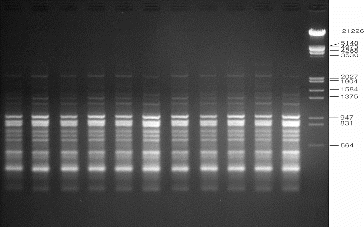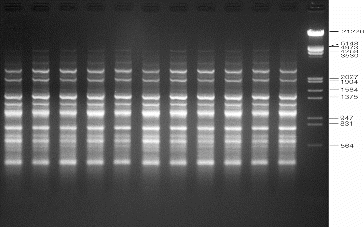Figures & data
Table 1. Effect of IBA on root formation from in vitro raised shoots of A. marina in the MS medium after 4 weeks of culturing.
Table 2. RAPD primers used to evaluate the extent of genetic fidelity of micropropagated Avicennia marina plantlets.
Table 3. DAMD primers used to evaluate the extent of genetic fidelity of micropropagated Avicennia marina plantlets.
Table 4. ISSR primers used to evaluate the extent of genetic fidelity of micropropagated Avicennia marina plantlets.
Figure 1. Effect of 6-benzyladenine (BA) on shoot regeneration (%) of A. marina in the MS medium augmented with NAA (1.0 μmol/L) + AC (3.0 g/L). Data represent means ± SEM. Values followed by the same letter within response variables are not significantly different (P < 0.05) based on Tukey's test.
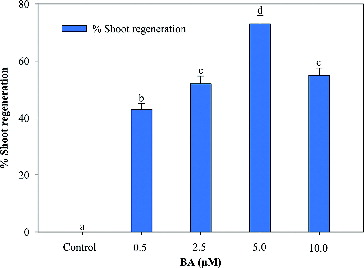
Figure 2. Effect of 6-benzyladenine (BA) on in vitro shoot multiplication and shoot length of A. marina in the MS medium augmented with NAA (1.0 μmol/L) + AC (3.0 g/L). Data represent means ± SEM. Values followed by the same letter within response variables are not significantly different (P < 0.05) based on Tukey's test.
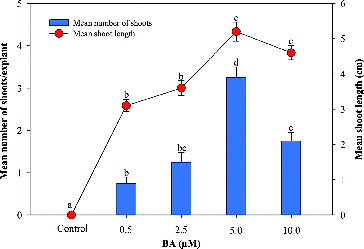
Figure 3. Representative RAPD profiles of in vitro raised and donor plants of A. marina generated using primer OPB-07. Lanes 1–10: randomly selected regenerated plants; lane D: donor plant; lane M: lambda DNA/EcoRI+HindIII marker (Cat no. SM0193; Fermentas, GmbH, Germany).
